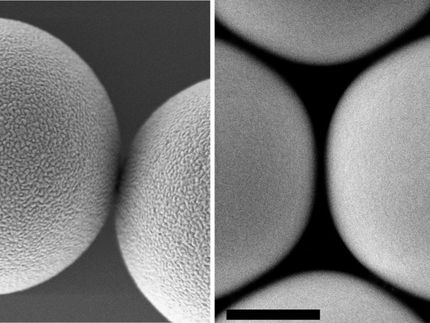Ceresana Market Analysis: Expandable Polystyrene
Global demand for expandable polystyrene (EPS) in the construction and packaging industries will slow down, but continues to increase. Important factors are the recovery of the construction sector after the financial and economic crisis in 2008/09, state-funded programs to improve energy efficiency, and increasing wealth and population in emerging countries. Average growth rates of 4.8% p.a. that have been generated in the previous eight years are unlikely to be reached again, but the international market research institute Ceresana nevertheless expects consumption to increase at an AAGR of 3.8% p.a. in the next eight years.
In order to create transparency regarding the current situation and future development of the market for EPS, Ceresana completely updated the most comprehensive study of the EPS market worldwide. That this market is worth a detailed analysis becomes obvious simply by the fact that market value is likely to rise to more than US$15 billion until 2020. For the first time, all market participants are able to obtain a complete overview over all relevant data and facts as well as background information concerning the EPS market. Producers, processors, and traders of EPS receive a basis for their strategic and operational planning.
Growth motor Asia-Pacific
Asia-Pacific already is the most important consumer of EPS worldwide, accounting for about 54% of global demand, followed by Western and Eastern Europe. Distribution of market shares is likely to change notably in the upcoming eight year period. Market analysts at Ceresana forecast Asian-Pacific countries to continue to gain shares of the global EPS market, mostly at the expense of saturated industrialized countries in Western Europe and North America. Developing and emerging countries, on the other hand, can capitalize on an increasing per capita consumption of packaging materials and other EPS-based products. The by far most important growth motor on the international market is China.
Moderate increase of capacities
Changes in regional demand will also have an effect on the production structure of manufacturers. Current EPS capacities of more than 10 million tonnes will be expanded by over 1 million tonnes until 2020. Almost 43% of these new capacities will be created in Asia-Pacific. However, the persistently tense global economic condition impedes a more rapid increase of available EPS capacities.
Regional differences
This most comprehensive report worldwide analyzes how the utilization of EPS will develop on individual markets. Due to its technical properties such as low weight, rigidity, and formability, this material can be used in a wide range of different applications. It may be used as heat insulation, cold and sound insulation, in the packaging industry or in the manufacturing of recreational and sport products.
One of the major application areas is the construction sector that accounted for more than 61% of total demand in 2012. European countries in particular record a widespread use of EPS in the construction sector, as a range of state-funded programs target at improving energy efficiency. All around the world EPS-based products are used in the construction of new residential building and in the refurbishment of old buildings. Even on saturated markets, this can provide growth impulses.
Packaging made from EPS that is, for example, used to transport fresh fish or electronic goods, account for more than a third of global demand. Especially in Asia-Pacific and South America EPS products are accounting for a significant share of total demand.
Other EPS-based products include recreational goods such as helmets, cores for surfboards, life jackets or foam cups for hot beverages. A particularly large consumption volume in this segment is recorded in North America, last but not least due to a comparatively high consumption of foam cups. EPS is also used in child safety seats, casting molds, and horticultural applications. Taken together, all these applications accounted for about 4% of global demand.
The construction industry creates growth
Demand development in individual application areas will be comparatively similar in the next eight years. As a result, shares of the individual application areas will shift only slightly by 2020. Demand in Other Applications is likely increase at the least dynamic rates of 1.7% p.a. and the highest relative increases are forecast for EPS consumption in the Construction sector that will rise by roughly 4.1% per year.
Most read news
Other news from the department business & finance

Get the chemical industry in your inbox
By submitting this form you agree that LUMITOS AG will send you the newsletter(s) selected above by email. Your data will not be passed on to third parties. Your data will be stored and processed in accordance with our data protection regulations. LUMITOS may contact you by email for the purpose of advertising or market and opinion surveys. You can revoke your consent at any time without giving reasons to LUMITOS AG, Ernst-Augustin-Str. 2, 12489 Berlin, Germany or by e-mail at revoke@lumitos.com with effect for the future. In addition, each email contains a link to unsubscribe from the corresponding newsletter.



























































